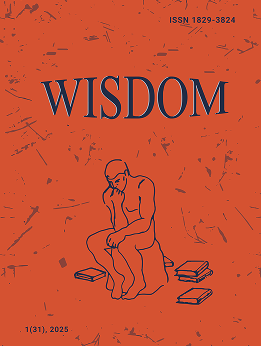The Impact of Behaviorist Theories and the Legal System Laws Developed from Them
DOI:
https://doi.org/10.24234/wisdom.v26i2.1031Keywords:
behavioral psychology, fiction, crime, society, masculinity, conscious, unconsciousAbstract
The theories, which stress how environmental cues act as catalysts for criminal action, are based on ideas of imitation and learning. To comprehend criminal behavior as a learned or copied reaction to societal and environmental stimuli, this research emphasizes the significance of psychological deviations. The macro and micro layers of crimes are the main topics of this study’s investigation of psychological theories of the criminal justice system. In order to understand how societal and environmental factors affect individual criminal conduct, sociological and psychological perspectives on crime are used in this analysis. The idea of a mentor or guide is introduced, making the argument that people frequently need assistance and direction to develop their personalities. This research concludes that in the 20th century, blatant crimes such as drug trafficking and gambling undermined the rights of others to life and permanently severed the person from the mental conscious level, transferring him to an unconscious, unreal, obscured, and incomprehensible reality. This article reveals that men struggle more than women to communicate and comprehend their emotions, which makes them more likely to be charged with crimes.
Downloads
References
Bandura, A. (1969). Principles of behavior modification. Holt, Rinehart, and Winston.
Bandura, A. (1986). Social foundations of thought and action: A social cognitive theory. Englewood Cliffs: Prentice Hall.
Berke, J. H. (1986). Shame and envy. British Journal of Psychotherapy, 262-270. DOI: https://doi.org/10.1111/j.1752-0118.1986.tb01341.x
Blackburn, R. (1998). Psychopathy and personality disorder. Dordrecht, Netherlands: Kluwer Academic Publishers.
Glueck, S., & Glueck, E. (1952). Delinquents in the making. New York: Harper and Brothers.
Hare, R. (1998). Psychopathy: Theory, research, and implications for society. Netherlands: Kluwer Academic Publishers.
Hendel, R. (2012). ìFirst Murderî (Gen. 4:1-16). California University Press.
Kazdin, A. (1989). Behavior modification in applied settings. Pacific Grove: Brooks/Cole Publishing.
Miller, N. E., & Donald, J. (1941). Social learning and imitation. New Haven, CT: Yale University Press.
Puzo, M. (n.d.). The Godfather. Retrieved March 2, 2023 from https://www.kkoworld.com/kitablar/Mario_Puzo-The_Godfather_eng.pdf
Rotter, J. B. (1954). Social learning and clinical psychology. Englewood Cliffs, New Jersey: Prentice Hall. DOI: https://doi.org/10.1037/10788-000
Shoemaker, D. J. (2005). Theories of delinquency: An examination of explanations of delinquent behavior. New York: Oxford University Press.
Siegel, L. J., Welsh, B. C., & Senna, J. J. (2006). Juvenile delinquency: Theory, practice, and law. Belmont, CA: Thomson /Wadsworth.
Skinner, B. F. (1963). Operant behavior. American Psychologist, 503. DOI: https://doi.org/10.1037/h0045185
Thorndike, E. (1898). Animal Intelligence: An experimental study of the associative processes in animals. New York: The Macmillan Company. DOI: https://doi.org/10.1037/10780-000
Wellek, R., & Warren, Au. (1963). Theory of Literature. Harmondsworth: Penguin Readers.
Westen, D. (1999). Psychology mind, brain, and culture. New York: John Wiley and Sons Inc
Downloads
Published
How to Cite
Issue
Section
License
Copyright (c) 2023 Serine Petrosyan

This work is licensed under a Creative Commons Attribution-NonCommercial 4.0 International License.
Creative Commons Attribution-Non-Commercial (CC BY-NC). CC BY-NC allows users to copy and distribute the article, provided this is not done for commercial purposes. The users may adapt – remix, transform, and build upon the material giving appropriate credit, and providing a link to the license. The full details of the license are available at https://creativecommons.org/licenses/by-nc/4.0/.















